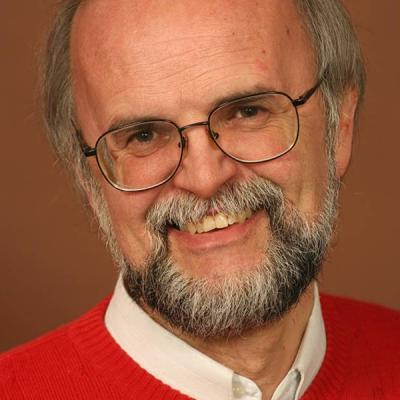
For over two millennia, medicinal mushrooms have been used in Ancient Eastern Medicine to produce the most effective pharmaceutically active compounds. These mushrooms are believed to have over 130 medicinal functions, including antitumor, immunomodulating, antioxidant, cardiovascular, antihypercholesterolemic, antiviral, antibacterial, antiparasitic, antifungal, detoxification, hepatoprotective, antidiabetic, and other effects.
In the field of fungal biotechnology, mushroom polysaccharides with antitumor and immunostimulant properties have been given special attention. Fungal polysaccharides, proteins, proteoglycans, terpenoids, sterols, steroids, and other products are an incredible treasure of entirely naturally produced molecules. These have high proven efficacy and represent great economic opportunities.
We came to significant findings in the experimental work related to fungal polysaccharides. The purified polysaccharide isolates from G.lucidum and G.frondosa were further tested for the induction of inflammatory cytokines. The results showed that intracellular polysaccharides were stronger inducers of innate inflammatory cytokines, while extracellular polysaccharides demonstrated a higher capacity to modulate cytokine responses of IONO+PMA-activated lymphocytes.
The results indicate that G.lucidum polysaccharides enhance Th1 response with high levels of IFN-γ and IL-2, and display low to no impact on IL-4 production. A similar pattern was observed at the regulatory cytokine IL-10. All the fractions tested enhanced IL-17 production at different levels. After obtaining different fractions of two polysaccharide groups, polysaccharide-protein complexes and polysaccharides with removed proteins, the cytokine responses of peripheral blood mononuclear cells from leukocyte concentrates (PBMCs) were studied in vitro. The cells were activated by various polysaccharide fractions, and hence, the ability to induce inflammation in cell culture was determined by the measurement of TNF-α, IFN-γ, and IL-12. The ability of different polysaccharide fractions to modulate cytokine responses of lymphocytes, activated with polyclonal activators ionomycin (IONO) and forbol-12-myristate-13-acetate, was studied. The concentration of IL-2, IL-4, IFN-γ, IL-10, and IL-17 in the cell cultures was determined.
Polysaccharides stimulated cytokine responses of polyclonal activated lymphocytes and polarized into Th1 response. Response intensity varied on polysaccharide fractions' type, purity, and concentration. Intracellular polysaccharides had a more significant impact on the inflammatory immune response, while extracellular polysaccharides were more potent stimulators of the immune response of T lymphocytes. The present research has also revealed the effects of polysaccharides on the synthesis and production of IL-17, which represents a new yet-to-be-published original contribution to the knowledge of controlling effector functions of lymphocytes.
However, the use of medicinal mushrooms starts with comprehensive (agro)biotechnology, i.e., the large-scale production of mushroom fruiting bodies is achieved through farming or advanced bioreactor technology. Farming practices utilize various agro-industrial waste streams, such as fruit and wood, to cultivate medicinal mushroom fruit bodies. Different cultivation approaches could be deployed, including growing on wooden logs and beds, as well as growing in bags, bottles, and other methods. Farming technologies in Asian countries have a lot of economic potential as there is a large demand for medicinal mushroom products with anticancer and immunomodulatory properties.
Still, the current cultivation technologies cannot meet market demand. To address this issue, significant research has been conducted in the last two decades in areas of fungal metabolism, physiology, and process engineering. The development of submerged and solid-state cultivation of medicinal fungi biomass in bioreactors has been one of the primary outcomes of this research effort. Bioreactors offer several advantages, such as higher sterility, effective bioprocess control, large-scale production, and short processing time. Solid-state cultivation is more suitable for large-scale veterinary products. In contrast, submerged cultivation in bioreactors is a faster and fully controlled technology that, combined with comprehensive genetic improvement and modern downstream processing, is expanding the range of medicinal mushroom products for human use.
In summary, cultivation, processing, and research of active compounds extracted from medicinal mushrooms have the potential to lead to the development of new drugs and some of the most popular over-the-counter human and veterinary remedies.
Dr. Marin Berovic is a Professor of Bioprocess Engineering and Biotechnology at the Faculty of Chemistry and Chemical Engineering - Department of Chemical, Biological, and Ecological Engineering, University of Ljubljana, Slovenia.
Dr. Berovic is a Member of the Slovenian Academy of Engineering Sciences, a leading force in the European Society on Biochemical Engineering Sciences (Chairman 2005-2008), and a Member of The Executive Board of the European Federation on Biotechnology.
He is a Co-Editor of World Encyclopedia on Living Support Systems EOLLS, Volume Biotechnology, and Co-Editor of Medicinal Mushroom Bioengineering and Biotechnology, Advances in Biochemical Engineering and Biotechnology, Springer Verlag 2023.
Dr. Berovic has five patents under his name in the field of wine technology.
Dr. Berovic's expertise extends far beyond academia. He is a globally recognized wine expert, sought after as a guest lecturer at prestigious universities in Italy, Portugal, Germany, Chile, Japan, and Australia. His influence in the wine industry is further demonstrated by his regular participation as a Juror or Expert Commissioner at International Wine Competitions, where he often servs as the Chairman of these esteemed Juries.
Dr. Berovic's talents are not confined to the scientific realm. He is a leading Slovenian artist and photographer, with over 40 cataloged individual and collective exhibitions. His artistic pursuits serve as a testament to his creativity and passion, inspiring those around him.